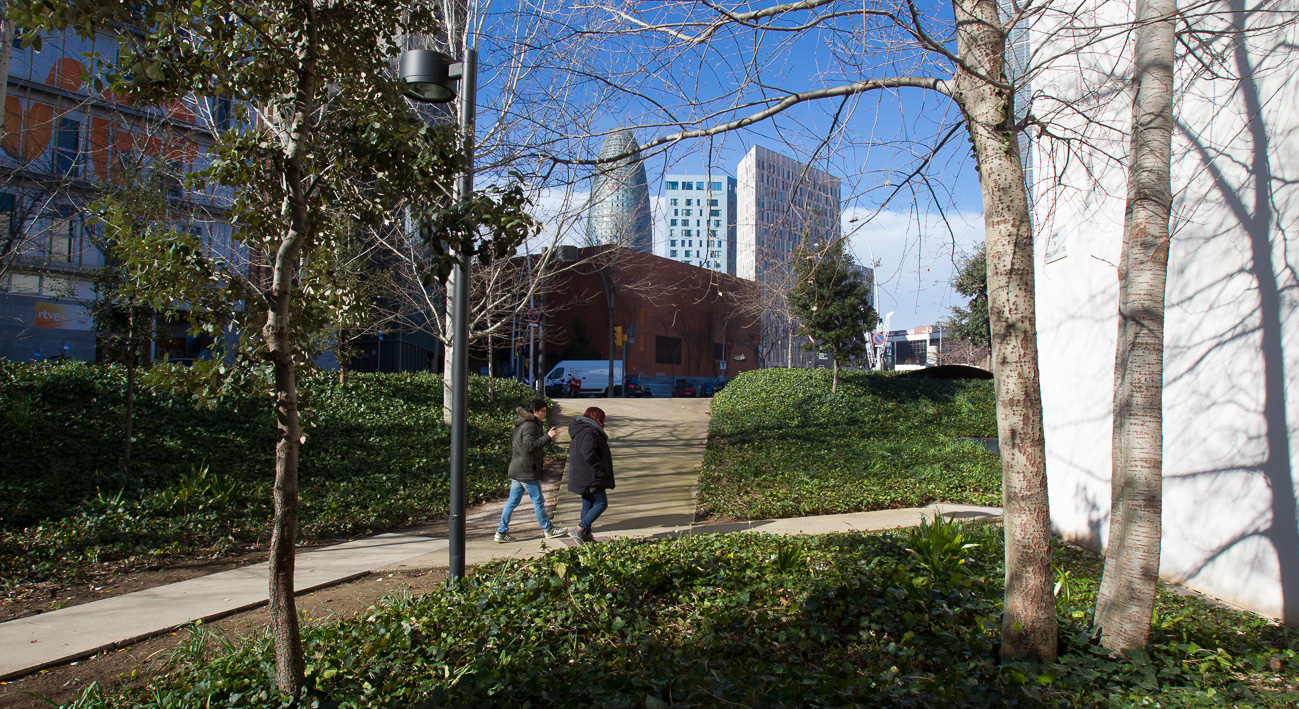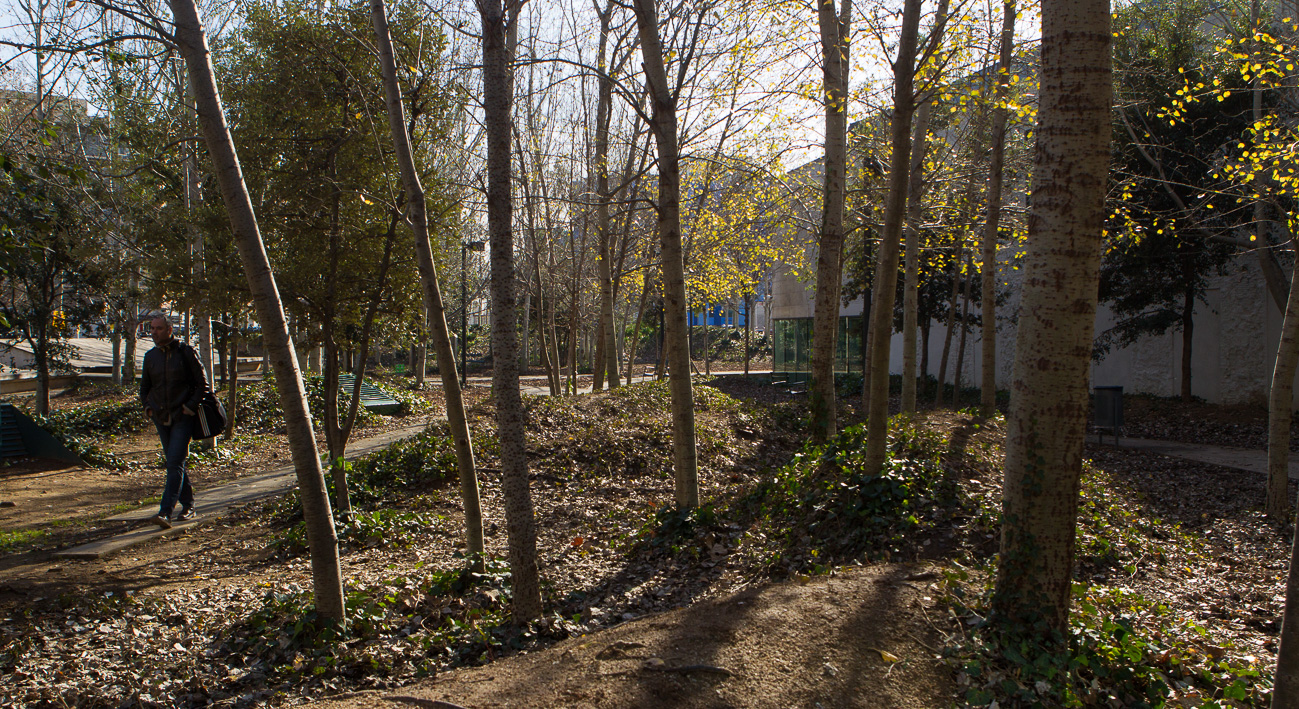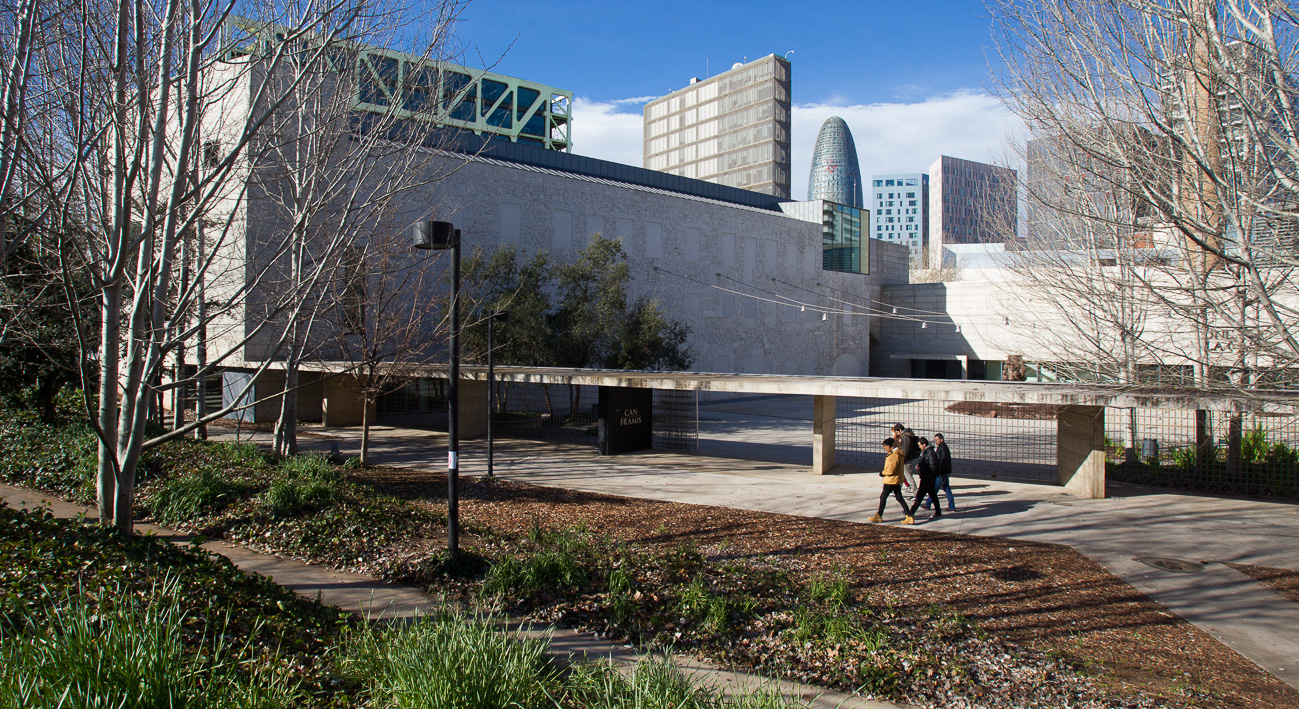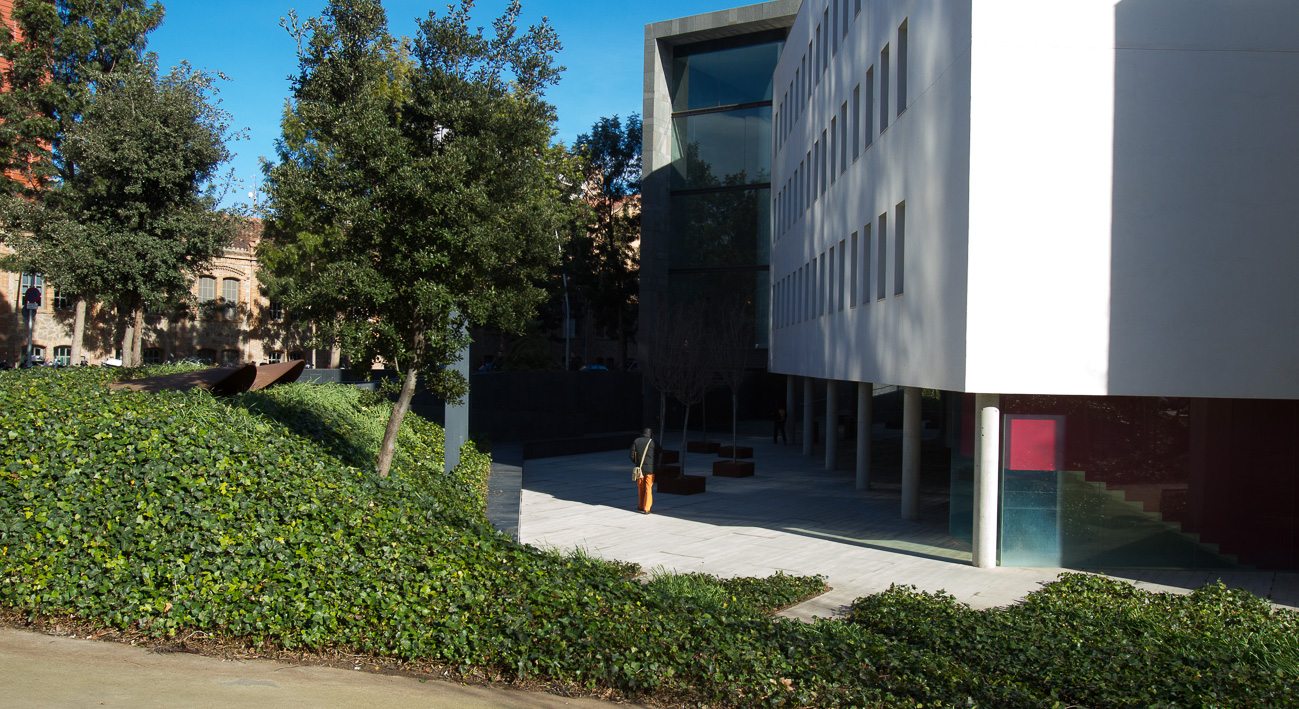
History
Can Framis used to be an important textile mill complex in Poblenou, dedicated to the manufacture of wool. The gardens were designed when the old mill was being restored and refurbished to accommodate the Vila Casas Foundation museum site, designed by the architects Jordi Badia, Jordi Framis and EMF (Martí Franch Studio, landscape architecture).
The garden design was produced by the BAAS Arquitectura Studio, run by Jordi Badia and Jordi Framis, and came out when the old Can Framis factory site was being redeveloped. Their landscaping project for the museum’s surroundings was shortlisted for the 6th Rosa Barba European Landscape Awards and the Public Space European Space competition, both of which were held in 2010.

Biodiversity
This small, bounded wood is made up of white poplars (Populus alba), black poplars (Populus nigra) and holm oaks (Quercus ilex). Mimicking a riverbank wood, they are grouped together in groups of two or three, growing randomly and without any apparent order, like a poem in free verse and rhyme.
This deliberately disorderly arrangement of trees camouflages the museum building. Visitors go down into the garden via various access ramps. A small natural breakwater lashed by green waves of ivy (Hedera helix) covers the entire surface. The wave-like layout of the parterres creates several levels and enhances the feeling of an undulating green sheet.
The ivy lies next to bulbous plants, with the paperwhite narcissus (Narcissus jonquilla tazetta) to the fore. You can also find Spanish bluebells (Hyacintus hispànica), seaheaths (Frankenia laevis), cat’s tails (Bulbine frutescens), red spider lilies (Lycoris radiata) and Osmanthus ‘bicolor’. There are also perennials and rhizomes, such as Arum italicum, which bears fruit arranged in orange and red bunches and gives off heat when it blossoms. Finally, there are also autumn daffodils (Sternbergia lutea), several varieties of iris (Iris spurea var marítima, Iris formosana and Iris umbicularis) and dwarf lilies of the Nile (Agapanthus peter pan).

Art and Architecture
The Museu Can Framis building is arranged as an architectural complex made up of three naves, two recovered from the old textile factory site and the other from a new floor that joins them together. The complex creates a small interior square that is only accessible when the museum is open and which closes at night. The buildings display the Fundació Vila Casas’ collection of art works from the second half of the 20th century.
Large circular tree pits mark out the landscaped area of this access space to the museum site. One of these contains a large rusty-coloured metal sculpture inspired by Dante’s Inferno. Its sculptor, Jaume Plensa, named it Dell’ Arte. It stands by a Berberis thunbergii var atropurpurea nana, which is characterised by its reddish colours during the autumn.

Landscaping and Design
The Jardins de Miquel Martí i Pol are a slightly sunken, small green mass that surrounds and hides the Museu Can Framis building. The site has a friendly woodland feel that invites visitors to stroll around.
During April, May and early June, it boasts a carpet of ivy rich in blue, yellow, red, purple and lilac shades, from the flowers of the bulbous and perennial plants growing in between.
-
- Titularity
- Public center
- Address:
- C Llacuna, 121
- Districte:
- Sant Martí
- Neighborhood:
- el Parc i la Llacuna del Poblenou
- City:
- Barcelona
Espai obert. No es tanca.






